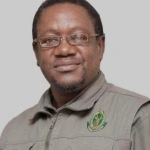President Emmerson Dambudzo Mnangagwa is Goromonzi, Mashonaland East Province where is set to Commission the Prospect Lithium Mine.
The parent company, Huayou, was founded in 2002 and over the past two decades, it has become a multinational corporation with a revenue base of more than US$48 billion and market value of over US$100 billion, ranking among the top 500 enterprises in China.
About 1 000 people were employed during the construction stage and hundreds more will get jobs when production goes full scale.
PLZ has already invested in education, health, water, security and road infrastructure projects they are benefitting the surrounding communities.
Efforts to increase lithium production have now placed a new focus on Zimbabwe, which has the largest lithium reserve in Africa and the sixth largest lithium reserve in the world. Zimbabwe is also estimated to have the highest number of lithium projects under exploration on the African continent.
Lithium is becoming a highly sought-after commodity in the drive to achieve a net-zero global economy.
The International Monetary Fund (IMF) has warned that by 2030 the global economy will have to have reduced its greenhouse gas emissions by at least 25% in order to meet the goal set in the 2015 Paris Climate Accords to limit the global temperature increase to 1.5°C. One way of achieving this goal is by taking steps to reduce global carbon dioxide (CO2) emissions to net-zero by 2050.
According to the World Economic Forum, 540 000 metric tonnes of lithium were mined globally in 2021. This is expected to increase to 1.5m metric tonnes and 3m metric tonnes by 2025 and 2030 respectively.
These numbers pale in comparison to the approximately 10m metric tonnes of untapped lithium resources that are believed to be present at the Bikita lithium project. Experts estimate that 20% of the world’s lithium demand can be met by Zimbabwe if it fully exploits its reserves.
Zwnews











